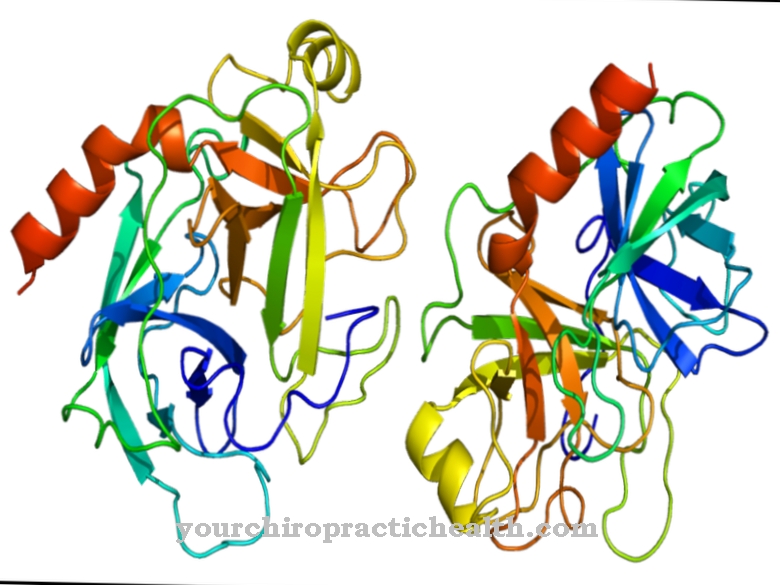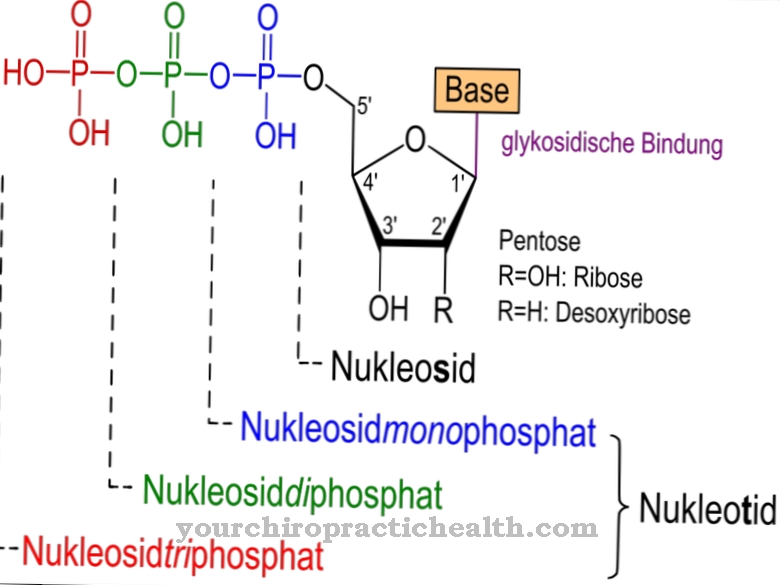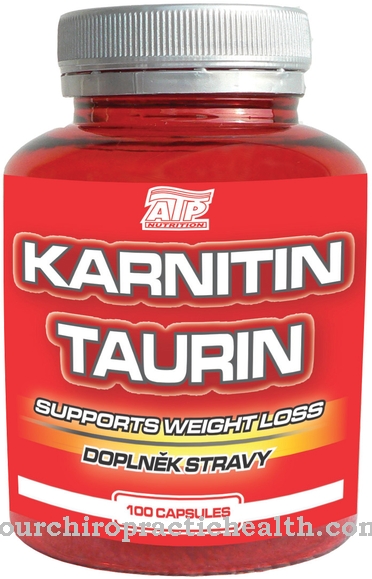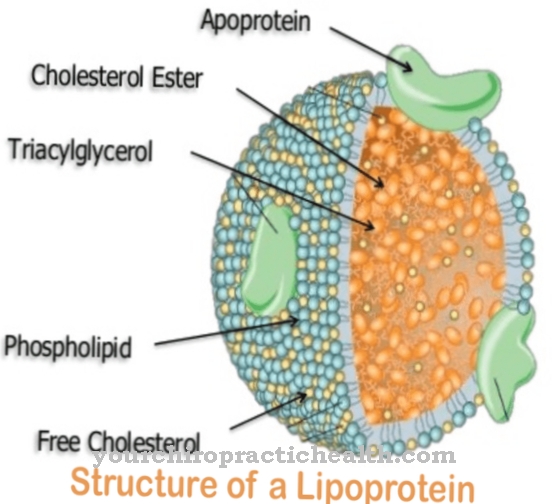At Resistin it is a peptide hormone. Medical research sees it as a potential link between obesity and diabetes mellitus (type 2).
What is resistin?
Resistin is a recent discovery: It wasn't until 2001 that researchers became aware of the hormone when they conducted a study on insulin resistance.
Another name for resistin is in English adipocyte-specific secretory factor (ADSF) as it appears to cause insulin resistance due to obesity. The medicine describes high overweight as obesity or obesity, for the determination of which they use the body mass index (BMI). The formula for the BMI relates the height and weight of an individual to each other.
Although critics repeatedly describe the BMI as unreliable, it is usually a good orientation: general health risks, individual disease factors and complex diseases have been linked to the BMI in countless studies. Experts define simple overweight as a BMI of at least 25 in people over 18 years of age who do not participate in competitive sports or, for example, do bodybuilding. Obesity is present from a BMI of 30 and correlates with numerous health problems - including type 2 diabetes.
Diabetes is one of the most common complications in overweight and obesity and can significantly reduce quality and expectation of life. The hormone resistin, which the human body produces in response to obesity and poor nutrition, makes cells resistant to the hormone insulin, which regulates blood sugar levels. As a result, the characteristic symptoms of diabetes are manifested.
Function, effect & tasks
Research became aware of the possible link between resistin and type 2 diabetes when the peptide hormone induced insulin resistance in mice in a US study. Resistin owes its name to this resistance.
Insulin is a hormone that the pancreas produces. It lowers the blood sugar level and thereby regulates the energy supply to the human body. When you eat food, the blood sugar level rises in the form of glucose. However, strong fluctuations would lead to a physiological imbalance; the organism is dependent on continuously having as much energy as possible available. For this reason, the body counteracts the rise in blood sugar: the pancreas releases insulin.
However, the insulin does not itself react with the glucose in the blood. Instead, it acts like a key, making the body cells absorb more glucose. This will bring the blood sugar level back down to its normal level. In the case of insulin resistance in the context of diabetes, the cells of the body do not react more or less than in healthy people to the insulin signal. Above all, the cells of the adipose tissue, the muscles and the liver are typically affected. The blood sugar level rises; but instead of flowing into the cells, the glucose remains in the blood and is therefore not available to the body as energy.
If left untreated, insulin resistance can, in extreme cases, lead to death through starvation - because although the person affected theoretically consumes sufficient food, the organism cannot metabolize it. According to recent research results, the peptide hormone resistin causes this insulin resistance.
Education, occurrence, properties & optimal values
The human body is able to produce resistin itself. The fatty tissue of the organism is responsible for this. As far as is known, resistin is only found in humans and other higher mammals. The peptide hormone molecule consists of 90 amino acids. Amino acids are units of protein; They consist of a central carbon atom (C) to which an amino group (NH2), a carboxyl group (COOH), a single hydrogen atom (H), an α-carbon atom and a residual group are attached.
The remainder group is unique for each of the 20 amino acids. Proteins not only serve as building blocks for hormones such as resistin, but also for structures inside and outside of cells and for enzymes. They are therefore vital. The genetic code determines the order in which the various amino acids form a chain. Due to their physical properties, these amino acid chains fold in three-dimensional space and thus acquire their characteristic shape.
Diseases & Disorders
Medicine has long known the connection between overweight or obesity on the one hand and type 2 diabetes on the other. Current knowledge suggests that resistin may be the missing link that explains the exact mechanisms behind this association.
Diabetes is a chronic metabolic disease, which the colloquial language also calls diabetes. Various causes can contribute to their development; insulin resistance is one of them. Scientists were able to observe this effect in animal experiments. In 2001 Steppan and colleagues carried out a study with mice. They injected the animals with resistin and observed the effects under controlled conditions in the laboratory. They also showed that drugs used to treat diabetes resulted in lower levels of resistin. The exact mechanisms are still unclear, but hope for new and long-term more effective therapies for diabetes.
Until recently, experts and laypeople mainly used the term “old age sugar” as a synonym for type 2 diabetes. However, fewer and fewer people use this term. One important reason for this is the widespread use of this form of diabetes, which has now reached the proportions of an epidemic worldwide. It affects people of all ages and is correlated with body weight. In the beginning, diabetes often manifests itself as an enormous thirst. Other symptoms are tiredness, visual disturbances, a feeling of weakness and increased infections.


.jpg)
























